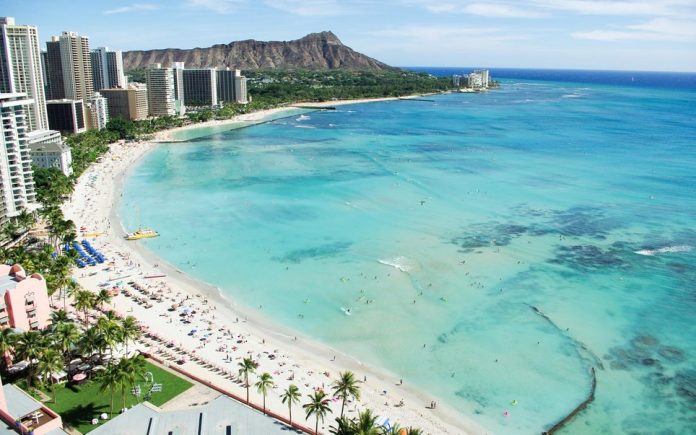
As nuclear tensions between North Korea and the United States grow, officials in Hawaii are walking a delicate line – quietly planning for a catastrophe while assuring residents and tourists alike that they can keep sipping beverages from coconuts without alarm.
The “without alarm” part gets harder Thursday.
That is when the government is set to bring back a statewide nuclear attack siren, a relic of the Cold War that will notify islanders that a missile is headed toward them. Officials will test the system for the first time on Dec. 1 just before lunchtime, according to the Honolulu Star-Advertiser.
If the alarm goes off at any other time, by the way, it means that residents have 15 minutes before a nuclear bomb destroys Hawaii as we know it. The tests will be conducted on the first business day of every month for the foreseeable future.
The siren tests are an audible example of the growing strife with North Korea, which has spooked other communities in the still-hypothetical line of fire. Guam distributed a pamphlet on nuclear attack preparedness that encouraged people to avoid using conditioner, “as it will bind the toxins to your hair.” A 16-page bulletin released by emergency management authorities in California warned people to beware of radioactive pets.
And Hawaii’s warnings about a possible nuclear attack have been understandably grim.
“There will be no time to call our loved ones, pick up our kids, and find a designated shelter,” Vern Miyagi, administrator of the Hawaii Emergency Management Agency, said in an interview with the Star-Advertiser. “We should all prepare and exercise a plan ahead of time so we can take some comfort in knowing what our loved ones are doing.”
The video wasn’t the only one that tried to balance a message of calm with a message about a worst-case scenario.
In October, the University of Hawaii sent an email to 50,000 students and 10,000 employees that spoke about growing tensions between the United States and North Korea and the rogue nation’s nuclear ambitions, according to The Washington Post’s Nick Anderson.
“In light of concerns about North Korea missile tests, state and federal agencies are providing information about nuclear threats and what to do in the unlikely event of a nuclear attack and radiation emergency,” the email said.
After hitting “send” on the apocalyptic-sounding message, the communications official responsible for it was immediately wishing for a do-over, saying, “It was a mistake on my part.”
Of course, terrifying, totally-on-purpose anecdotes abound.
In September, North Korea’s foreign minister warned that a strike against the U.S. mainland is “inevitable” after President Donald Trump mocked North Korean leader Kim Jong Un with the nickname “Little Rocket Man.” Trump, meanwhile, has said that the United States would “totally destroy” North Korea, warning Pyongyang that it would be met with “fire and fury,” if threats continue.
As Sam Kim and Kanga Kong reported for Bloomberg News this month, North Korea’s nuclear program escalated this year:
“It test-fired long-range intercontinental ballistic missiles twice and said the entire U.S. was now in range; it fired missiles over Japan twice; it threatened the U.S. territory of Guam; and it carried out its sixth nuclear test, detonating what it said was a hydrogen bomb that could be fitted onto an ICBM.
“. . . North Korea, which is thought to have six to 20 nuclear warheads, describes its weapons as a “precious sword of justice” against invaders and points out the demise of Iraqi and Libyan regimes after they gave up on nuclear arms.”
Hawaii has previously been depicted as a target by North Korea. Oahu is home to the Navy’s U.S. Pacific Command. Hawaii is about 4,600 miles from North Korea. The contiguous U.S. mainland is less than 5,000 miles from North Korea.
Emergency management officials’ theories about what would happen during an attack are horrifyingly detailed. The state estimated that a 150-kiloton-yield nuclear warhead detonated over Joint Base Pearl Harbor-Hickam would kill 18,000 people and injure up to 120,000, according to the Star-Advertiser.
But that’s a worst case, Miyagi said. Authorities believe North Korea would attack closer targets, such as South Korea or Japan – or instead aim for the U.S. mainland.
Kim Jong Un “has a limited amount of missiles, and there are many, many closer-in targets that he is guaranteed of hitting, such as Japan and South Korea,” Miyagi said, noting that “Hawaii is a very tiny target.”
(c) 2017, The Washington Post · Cleve R. Wootson Jr.
{Matzav.com}











